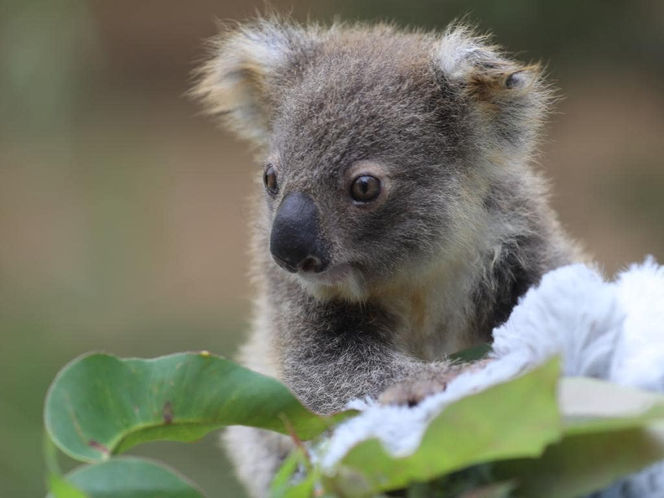Koala
VULNERABLE
50,000
left in the wild
Height : 60 - 85 cm
Weight : 4 - 15 kg


Koala's are iconic animals that are native to Australia. A common mistake is to call them a 'koala bear' as they are not bears but marsupials, who are mammals with pouches for their offspring. Koalas have hair like the coarse wool a sheep. They have two opposing thumbs on their hands and two toes fused together on their feet which help them to comb their fur. They have rough pads and claws on their hands and feet to help them to grab onto branches. Koalas live in the eucalyptus forests of southeastern and eastern Australia. They rely on the eucalyptus tree for both habitat and food, eating more than a pound of it every day. The eucalyptus is toxic so the koalas digestive system has to work hard to digest it which leads to the koala sleeping for long periods of the day. Koalas can sleep from 18 to 22 hours. They don't need to drink much water because of their diet and with their handy pouches they can even store some leaves for later. When they are not sleeping you can probably find them eating. Koalas breed in the summer time and their newborns are about the size of a bee. They will stay in their mothers pouches for the first 13 weeks. Joeys leave the pouch at 7 months old and start to travel on their mothers backs only returning to the pouch to suckle. They are fully weaned and independent by 12 months of age. They are loveable animals but are facing the threat of extinction with the threats they face.
Habitat : Eastern Australia
THREATS

Climate Change
There is increasing evidence that climate change is leading to significant koala range contractions in western Queensland and New South Wales. This is due to reduced nutrient levels in Eucalyptus leaves, rendering them of lower quality. There is also strong evidence of the impact of droughts and extremely high temperatures on koalas and the likelihood that these events will not only increase in incidence but in severity as well.
Human Impact

Humans have hunted koalas for their fur which caused koala number to plummet in the 19th and 20th centuries. Also increasing atmospheric CO2 levels will reduce the nutritional quality of Eucalyptus leaves, causing nutrient shortages in the species that forage on them. As a result, Koalas may no longer be able to meet their nutritional demands, resulting in malnutrition and starvation.

Loss of Habitat
As human population expands and grows so does the space that humans need. This leads to more agriculture, settlements and roads causing. The destruction and fragmentation of habitat for agricultural and urban development means koalas must spend more time on the ground moving from tree to tree. This means they are much more vulnerable to being hit by cars and attacked by dogs, while elevated levels of stress make them prone to sickness and disease.

Bush Fires
The 2019/20 season saw the worst bushfires Australia have ever faced which unfortunately killed many koalas and left many burnt and injured. The fires destroyed much of the forest they live in which has had a devastating effect on the koalas futures in the wild.
Did You Know?
Many koalas carry chlamydia, a sexually transmitted disease.
Scientific Name : Phascolarctos Cinereus
Life Span : 13 - 18 years
Diet : Herbivorous (Eucalyptus leaves etc.)
Predators : Goannas, Dingoes, Owls, Eagles & Pythons
Gestation : 30 - 36 days





















